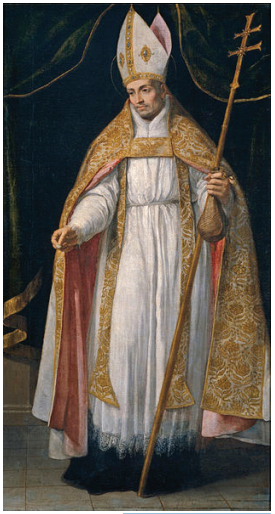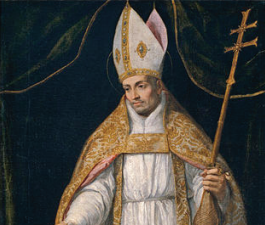When the mission station of the Agustinians in Miagao became a parish in 1731, they built a simple church and convento (rectory). After Moro raids from the sea burned the towns and church in 1741 and 1754, the priests transfered the town to the edge of a hill overlooking the sea and the Miagao River.
 The new church was built for a variety of uses. Primarily erected as a place of worship, it was also a fortress where parishoners could evacuate for protection from inavasions.
The new church was built for a variety of uses. Primarily erected as a place of worship, it was also a fortress where parishoners could evacuate for protection from inavasions.
Built of local yellow-orange sandstone, the large fortresschurch was completed in 1797. Although the church withstood typhoons and eartquakes, it burned twice once during the revolution against Spain in 1898 and again during the Filipino-American War of 1899-1902.
Its facade is a Filipino masterpiece. Unknown master carvers incised the entire surface in high refief. With wild abandon, they festooned the sandstone facade with an assortment of tasseled vines, tendrils and swags.The sumptous carving on the facade is probably the pinnacle of filipino native art, in which craftsmen abandon all restraint to reinterpret Western decorative styles in the local folks idiom.
The central element in the facade is St. Christopher, clad like a Filipino farmer with rolled-up trousers. He carries the Christ Child on His back while holding on to a lush coconut trees for support. Beside him are guava and papaya trees, flanked by ornamental urn. The scene merges Western Catholic iconography with a folk representation of the coastal Iloilo countryside. The second focal point of the facade bursts out in a delighful explosion of scrolls that frame central niche that enshrines the patron saint, Sto. Tomas de Villanueva. Massive, unmatched bell towers that taper upward to end in uneven heights provide a whimsical frame to the undulating facade.
While the Baroque was in vogue in Europe and Latin America, the Philippines evolved its own interpretation of the style, derivative of the European but folk in approach and execution. The church is an example of that style.
The Church of Sto. Thomas de Villanueva is one of the most outstanding examples of the fusion of the Western Baroque style with the Filipino folk motifs. The squatness of the church the massive bell towers and the angled buttresses reinforce the visual identity of the structure as a fortress. It is among the best examples of churches in “fortress Baroque” style.
The significance of Sto. Tomas de Villanuevais that it is an outstanding example of the Philippine Interpretation of a Western architectural style. The naive but harmonious integration of a Western Architectural idiom into the Philippine context and the exuberant symbology represents in architectural terms the colonization of the new Christianized native’s reinterpretation of the Western ideas in his native idiom.
Source: Philippines Living Landscapes and
Cultural Landmarks World Heritage sites in the Philippines
Author: Augusto F. Villalon

